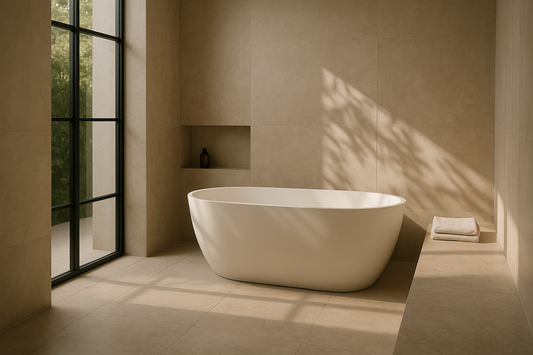
Cold vs. Sauna – Why Opposites Strengthen the Body
Share
Introduction
Cold invigorates. Warmth relaxes.
What sounds like a contradiction is in fact a finely tuned interplay – which has been part of Nordic culture for centuries and is now experiencing a renaissance.
Between ice baths and sauna sessions, a biological dialogue develops that realigns body and mind.
But what happens inside when we switch between these extremes? And how can this ritual be meaningfully integrated into everyday life?
Heat: Relief through expansion
During a sauna session, the body reacts with a targeted dilation of the blood vessels (vasodilation). Blood flow to the skin increases, and body temperature rises by up to 2°C.
The heart beats faster – but more calmly. Muscles relax, and the metabolism and lymphatic system get moving.
Benefits of heat:
-
Relaxation of muscles and fascia
-
Relief from joint pain
-
Promotes detoxification through the skin
-
Supporting the immune system through short-term heat stress
Cold: sharpness due to constriction
In contrast, cold provokes a strong contraction of the blood vessels (vasoconstriction). The body protects the organs, the heart rate increases, stress hormones are released – but at the same time, the nervous system re-regulates itself.
Benefits of cold:
-
Reduction of inflammation
-
Promoting mental clarity
-
Activation of brown adipose tissue
-
Stabilization of the immune system & stress responses
The Interplay: The Art of Regulation
There is no contradiction between cold and heat – but rather a cycle.
The alternating stimuli train vascular elasticity, challenge the autonomic nervous system and support the resilience of the entire organism in the long term.
Typical application (e.g. Nordic style):
-
10–15 minutes sauna
-
1–3 minute ice bath
-
Rest period (10 min.)
→ 2–3 rounds per session
Important: Your circulation should be healthy and stable. The interplay is not a competition, but a rhythm.
Science meets ritual
Modern studies prove:
-
Regular alternation of heat and cold can reduce inflammation levels
-
It improves sleep quality, heart rate variability and mental resilience
-
The interaction even influences glucose metabolism and insulin sensitivity
But far from numbers, the following applies:
Those who learn to consciously move through opposites also learn to maintain tension – without burning out.
How to get started – without pressure
For beginners:
-
Start with shorter cold phases (10–30 seconds)
-
Pay attention to a good body feeling, not to timers
-
Combine with breathing, calm & conscious intention
The transition doesn't have to be a ritual for extreme athletes - but rather a very silent, physical dialogue.
A reset. A recalibration.
Conclusion: Strength arises between tension and relaxation
Ice and heat. Two elements that don't exclude each other—in fact, they reinforce each other.
In controlled alternation, a new body perception emerges:
stronger, more alert, more resilient.
Whether you start with cold or with heat: what matters is not how you do it – but that you do it consciously.
Recommended reading:
-
“Breathing Technique & Ice Bathing – Control in Stimulus”
-
“Why 4 °C is optimal”
-
“Rituals for Regeneration”



